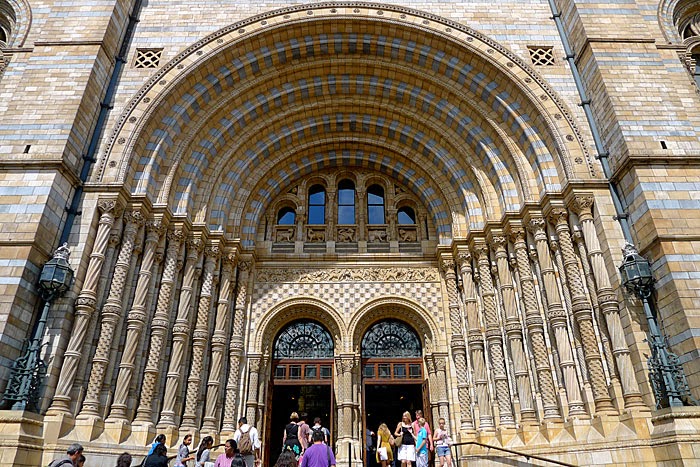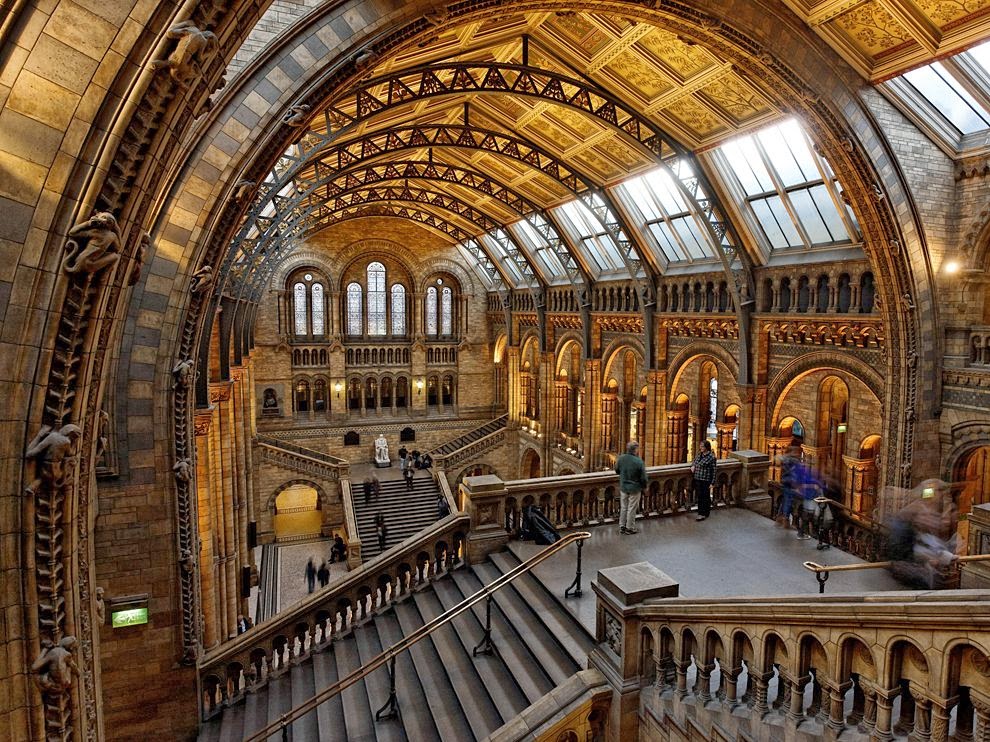The Natural History Museum, found in London, is a museum that houses a wide array of collection from the various episodes of natural history. Along with Science Museum and Victoria and Albert Museum, it belongs to the three large museums on Exhibition Road in South Kensington. The museum is recognized in the world as a center for research, most especially when it comes to identification, conservation and taxonomy.
The Natural History Museum is considered one of London’s most stunning buildings. With hundreds of thrilling interactive exhibits, it highlights the Dinosaur gallery, Mammals division and the museum’s iconic Diplodocus skeleton. Those who dream of being a scientist for a day can make it come true in the Natural History Museum as there are programs that encourage visitors to be interactive and one with the Darwin Centre’s high-tech Attenborough Studio, look into laboratories and watch how real scientists do their job, and have a sight of over a hundred of fascinating specimens.
The museum houses almost 70 million of life and earth science specimens that comprise five main category: Zoology, botany, mineralogy, paleontology and entomology. Many of its collection does not only have scientific significance but historical relevance as well, as it also plays home to the specimens gathered by Charles Darwin. Further, the library contains a massive collection of books, journals and artwork collections, all related to research, discovery and science.
The Natural Museum of Art is divided into four zones. The green zone is about life, planet, evolution and environment. The blue zone features the sea creatures, from the enormous blue whales to the tiniest invertebrates. The orange zone is about wildlife, nature and gardens, and lastly, the red zone educates everyone about the different planets, sun, moon and the rest of the parts of the universe.
Since the Natural History Museum is publicly funded, it does not require an entrance fee to get in. Apart from that favorite feature, what visitors also found fascinating is its architecture. The museum reflects the typical Victorian architecture and its ornate terracotta facade and terracotta moldings mirrors the diversity of life from the past to the present.
The Natural History Museum of London is one of the world’s most visited museums, and the long lines at the entrance are a proof to this claim. The museum continuously attracts not just locals, but also tourists who are making the Natural History Museum a part of their London trip itinerary.
 Tourist Destinations World Travel Guides
Tourist Destinations World Travel Guides









